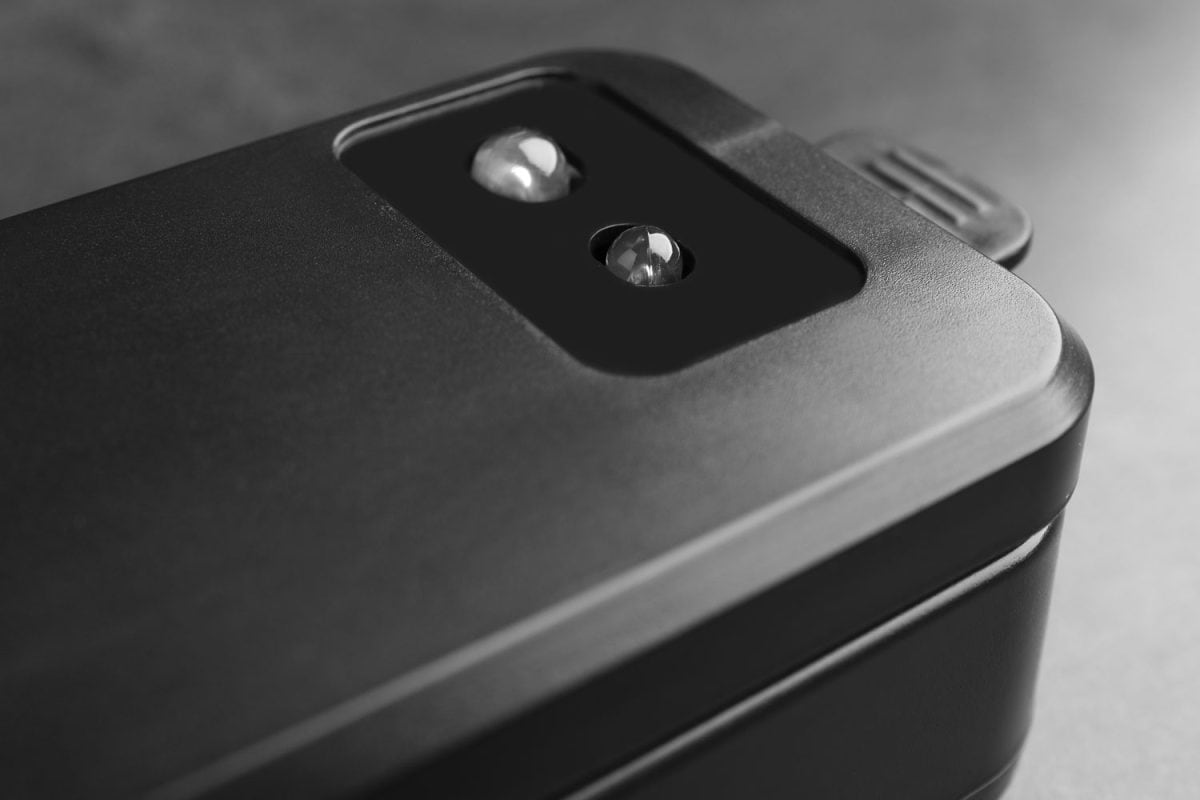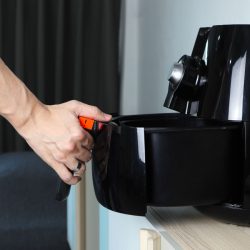In today's world, where food storage and preservation have become crucial, vacuum sealers offer a practical solution.
The Anova Vacuum Sealer stands out among the various brands available with its unique features and benefits.

As you navigate, learn about the step-by-step usage process and solutions to common issues.
We'll also cover essential safety precautions to ensure risk-free usage. By the end, you'll have comprehensive knowledge about this valuable tool.
Anova Vacuum Sealer Basics
The Anova Vacuum Sealer's design emphasizes both convenience and efficiency. Its functions cater to various food types, ensuring optimal storage conditions.
You'll also appreciate the additional features like the built-in cutter, which adds to the sealer's versatility. However, be mindful of the noise level during the operation.
If you're new to using the Anova Vacuum Sealer, below are the basic functions of this unit:
Vacuum & Seal
When activated, the device removes air from the bag and seals it, ensuring contents are vacuum-packed securely.
Moist
Tailored for foods with higher moisture content or marinated foods like meats or fish.
Before sealing such items, it's recommended to choose this setting, especially if you're planning to use the Vacuum and seal, Seal, or Pulse functions subsequently.
Dry
This setting is optimized for items with low moisture content, like rice or grains. Before sealing these dry goods, ensure you've selected this mode.
Seal
Beyond just sealing, this function creates a strong double seal on the bag. This is particularly useful when you're preparing a bag or using the Pulse function for sealing.
Pulse
For foods that need a gentler touch, this manual vacuum function lets users control the air extraction.
After achieving the vacuum level that suits the delicacy of the food, the Seal function can be used to secure the bag.
External Pulse Vacuum
This function caters to external containers. You can vacuum-seal food containers effectively by connecting a hose to the vacuum sealer.
What to Do Before First-Time Use?
Before using the Anova Vacuum Sealer, take a few moments for setup and familiarization. Begin by unboxing the sealer and checking all its parts.
You should find a user manual and accessories like a plastic air hose along with the sealer.
The sealer also has an integrated cutter and a complementary plastic bag roll. Before you start using the cutter, remove any protective seal on it.
Familiarizing yourself with these features and running a test ensures you're ready to use the sealer effectively.
How to Use the Anova Vacuum Sealer?
Now that you've familiarized yourself with the various functions of the vacuum sealer let's start using the Anova Vacuum Sealer.
Note: The steps outlined in this article pertain to the Anova Precision Vacuum Sealer.
Depending on the specific model you own, there may be slight differences in the operation and features. Always refer to your user manual for model-specific instructions.
Step 1: Prepare the Bag
When setting up your vacuum bag, you can cut it to the length you want or seal one end and then cut it.
Whichever method you opt for, once you use the "Seal" function and lock the lid in place, you'll see a precise double seam on the end of the bag, showing that it's securely sealed.
Step 2: Fill the Bag
Fill the bag with your chosen food. Select the appropriate setting on the vacuum sealer depending on the food's nature.
If you're sealing moist or marinated foods like meat or fish, choose the "Moist" pre-setting. For dry foods like rice, opt for the "Dry" pre-setting.
Step 3: Position the Bag for Vacuuming
Place the open end of the bag into the sealer's vacuum channel, ensuring proper alignment. Close and lock the lid.
Step 4: Vacuum and Seal
Select the "Vacuum & Seal" function for automatic vacuuming and sealing. This auto function extracts air and seals the bag automatically.
If you're dealing with delicate foods like fruits or bread, use the "Pulse" function. This manual vacuum allows control over the air extraction process.
Once the desired vacuum level is reached, use the "Seal" function to secure the bag.
If you wish to vacuum food containers, connect the hose accessory to the sealer and the container. Use the vacuum function to extract air.
Step 5: Observe the Vacuuming Process
The sealer will automatically extract air from the bag and seal it once all the air has been removed.
The food inside should be tightly packed with no visible air pockets.
Watch this short video for a helpful visual walkthrough of the steps mentioned above.
Safety Precautions When Using Anova Vacuum Sealer
When using an Anova Vacuum Sealer, following some safety precautions is important to avoid accidents or injuries. Here are some safety tips to keep in mind:
- Power Precautions: Ensure the vacuum sealer is switched OFF before plugging or unplugging. Disconnect from the outlet when not in active use or before cleaning.
- Proper Use: Only use the sealer with its recommended attachments and for its intended purpose.
- Cord Safety: Avoid mishandling the cord—don't pull, use it as a handle, or expose it to sharp objects or moisture.
- Physical Safety: Stay clear of the sealer's moving parts, and don't attempt self-repairs. If the appliance has fallen or seems damaged, avoid use.
- Don't touch the heating element: The heating element of the vacuum sealer can get very hot. Avoid touching it while it is in use or immediately after use.
- Use it on a stable surface: Avoid using it on an unstable surface or one prone to vibrations.
- Don't overfill the bags: Leave enough space for the air to be sucked out and for the bag to be sealed properly.
- Don't seal liquids: Liquids should not be sealed using the vacuum sealer. They can get sucked into the machine and cause damage.
- Heat Caution: Keep the sealer away from heat sources like ovens, burners, or hot gases.
Are you curious whether you can vacuum seal fresh corn on the cob? Learn the details here.
Why Isn't My Anova Sealer Working Properly?
If you're having trouble with your Anova Vacuum Sealer, don't worry. Here are some common problems and solutions to help you troubleshoot the issue.
Vacuum Sealer Isn't Sealing Properly
Before using the Anova Vacuum Sealer, ensure the bag's proper placement. Keep it clean, dry, and free of wrinkles.
Overfilling can hinder the sealing process, so consult your user manual for capacity guidelines.
Also, regularly inspect the gasket and heating bar for any damages that might require professional attention.
Vacuum Sealer Isn't Removing All the Air
If your Anova Vacuum Sealer isn't efficiently extracting air, there might be a couple of reasons.
First, inspect the gasket. A deformed gasket can affect the sealer's performance. If you find any deformities, replace the gasket and test the sealer again.
Second, ensure the bag's proper placement. The edge of the bag should be correctly positioned within the vacuum chamber.
If not, adjust the bag's position and try sealing it again. Proper placement and a working gasket are crucial for effective air removal.
Bag Problems After Sealing
After sealing, if the bag inflates, remember that certain foods, especially fresh produce, might not be suitable for room-temperature storage when vacuum-sealed.
For best results, use the original vacuum sealer bags and rolls.
Wondering if it's safe to microwave Ziploc bags? Discover all the answers in all the answers in this in-depth article on the topic.
Final Thoughts
Congratulations! You are now a pro at using your Anova Vacuum Sealer. With just a few simple steps, you can ensure that your food stays fresh for longer periods of time.
We hope you find this article helpful! If you have any questions, feel free to let us know in the comments below.
You can also visit Anova's support page if you're in need of professional help.
Remember, always use the correct settings for the type of food you are sealing, and make sure to clean your machine after each use properly!




![Healthy food for kids concepts: well balanced school lunch box shot on blue table. School supplies are around the lunch box, How To Seal Plastic Food Containers [4 Cool Tricks!]](https://kitchenseer.com/wp-content/uploads/2020/12/Healthy-food-for-kids-concepts-well-balanced-school-lunch-box-shot-on-blue-table.-School-supplies-are-around-the-lunch-box-250x250.jpg)
![Close up view of Ninja Foodi air fryers for sale inside a Target retail store, How To Use Ninja Air Fryer [Complete Guide]](https://kitchenseer.com/wp-content/uploads/2023/03/Close-up-view-of-Ninja-Foodi-air-fryers-for-sale-inside-a-Target-retail-store.-250x250.jpg)
